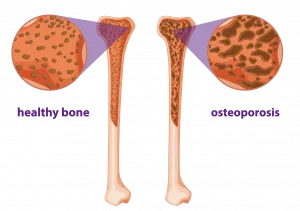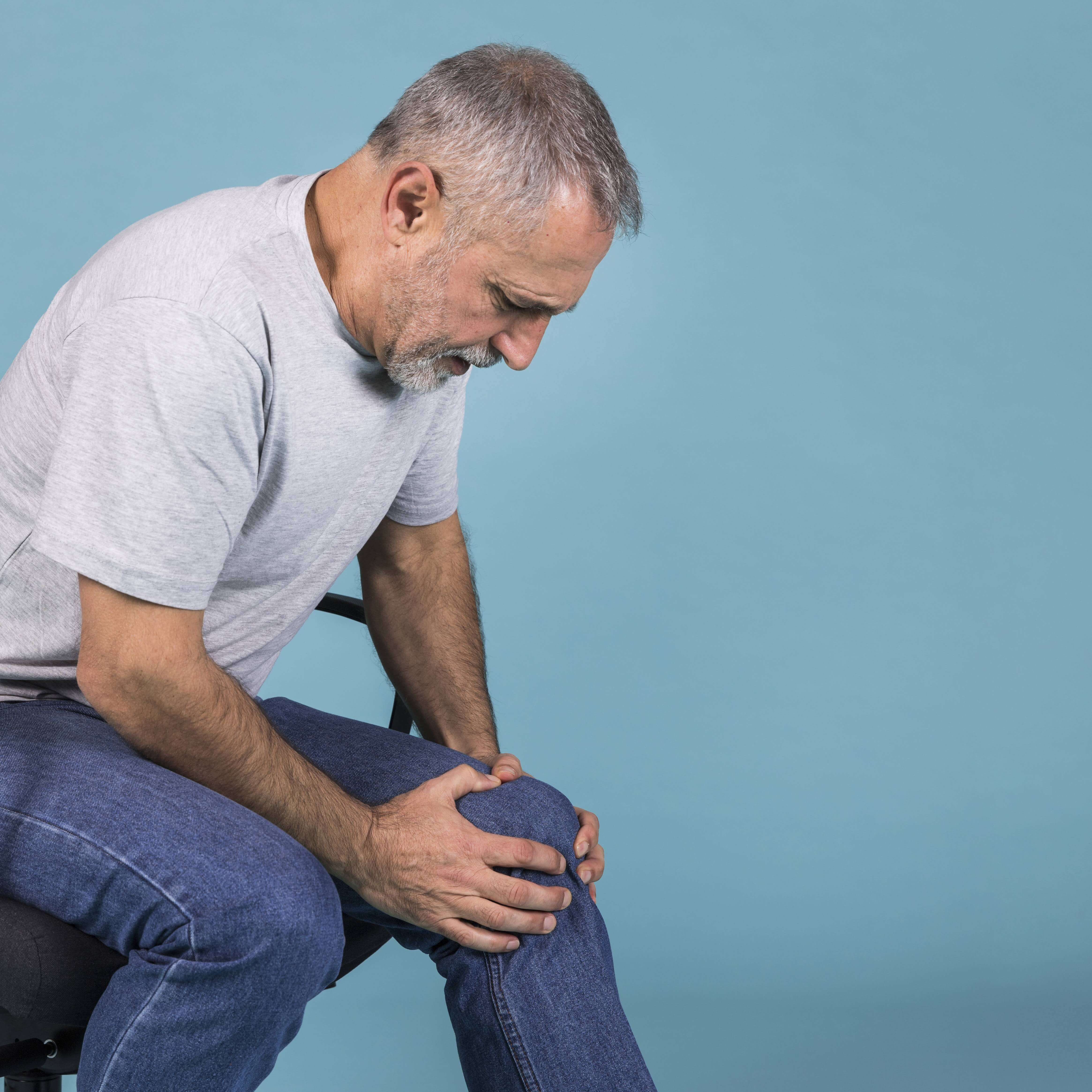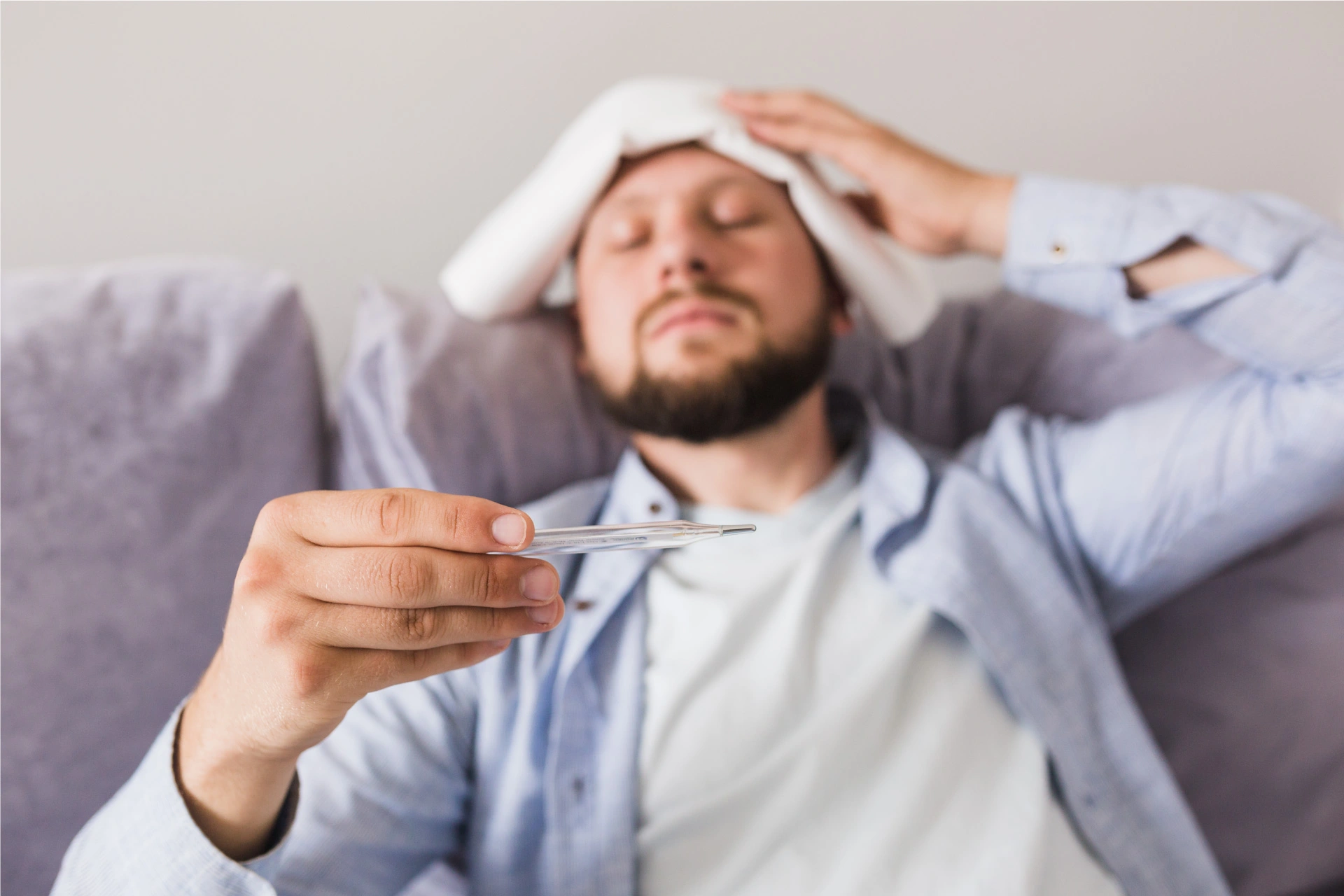General Health | 5 min read
What is Osteoporosis?
Medically reviewed by
Table of Content
Key Takeaways
- Osteoporosis is a bone condition, where the bones become weak and brittle
- But one can take preventative measures for the same from young-adulthood
- Following a well-balanced diet is essential for strengthening bones and restoring lost bone density
Osteoporosis is a bone condition, where the bones become weak and brittle. It is a progressive disease that is characterized by low bone mass and microarchitectural deterioration of bone tissues making it susceptible to fractures. This disease affects millions of people all over the world every year.
Osteoporosis can occur in people of any age, but it’s more common in older adults, especially women. The rate of reduction in bone mass and density increases during late perimenopause (perimenopause refers to the period right before menopause begins) and post-menopause in women. The most commonly affected bones in osteoporosis are the ribs, hips, and the bones in the wrists and spine. When the osteoporosis affects the bones of the spine, it causes faulty or hunched posture.

What are Osteoporosis Symptoms?
Osteoporosis in early stages is typically symptomless. Mostly, people are not aware of their condition until they have broken a bone. After early stage although, one can have signs and symptoms like back pain, bad posture, receding gums, weaker grip strength, brittle nails. In a much later stage, it can cause loss of height due to compression fractures of the spine and fractures from minor fall or sudden movement.

What Causes Osteoporosis?
A bone is in a constant renewal process, in simpler words, a bone is broken down and is replaced continuously. As we age, the bone mass is lost faster than getting created. Bones begin to lose calcium making them porous and fragile. There are various contributing factors which determine the rate of this bone decline:
- Age: The older you are, the greater are your chances of bone loss.
- Family history: Having a history of osteoporosis in your immediate family, puts you at a higher risk.
- Gender: Females tend to lose bone mass at a faster rate than men especially at menopause.
- Lack of physical activity: Weight-bearing exercises such as brisk walking, jogging etc. help the bones to absorb calcium from the blood. Lack of exercises will lead to lesser calcium for bones and risk of osteoporosis.
- Poor Diet: Lack of calcium and vitamin D are deteriorating factors for bones.
- Heavy smoking: Tobacco is toxic to your bones.
- Steroids: Long term use of oral or injectable steroids can cause slower bone remodelling process. Cortisone, hydrocortisone, glucocorticoids, and prednisone are certain medications used for asthma, psoriasis, rheumatoid arthritis that can cause Osteoporosis.
- Excessive alcohol consumption: Heavy drinking habit can lead to osteoporosis.
- Hormonal disorders: Hyperthyroidism and hyperparathyroidism can cause bone loss.
How to Prevent Osteoporosis?
Although Osteoporosis is a condition prevalent only in older years of life, one can take preventative measures for the same from young-adulthood. Most of these measures are small changes affecting lifestyle choices, and reap benefits only in the long term:
- Sufficient consumption of calcium and vitamin D.
- Following a well-balanced diet.
- Engaging in regular exercise.
- Hearty intake of foods fruits and vegetables.
- Avoiding smoking and limiting alcohol intake.
Exercises for Osteoporosis
Best exercises to avoid deterioration of Osteoporosis are exercises that focus on flexibility and bearing weight. These exercises are never intense straight off the bat, they always start slow and build-up in both weight and intensity. This slow, but consistent build-up results in stronger bones, increased agility and flexibility, and improved balance and coordination. Only your doctor can suggest a perfectly customized exercise plan suited for you bone density, range of motion, age and balance, but below mentioned are the most common set of exercises:
- Brisk walking and jogging
- Step exercises like climbing stairs and step aerobics
- Free weight lifting
- Slow tempo dancing
- Racquet sports such as badminton
- Yoga and low-impact Pilates
Diet to follow for preventing Osteoporosis
Following a well-balanced diet is essential for strengthening bones and restoring lost bone density, however, lack of calcium intake is the major cause of Osteoporosis. Many-a-times we consume enough calcium but our body is unable to absorb it due to the lack of vitamin D. Try consuming the following foods for the same:
Calcium:
- Milk, cheese and other dairy products.
- Green leafy vegetables such as broccoli, cabbage and fenugreek.
- Soya beans and tofu.
- Soya drinks with added fortified calcium.
- Nuts.
Vitamin D:
- Oily fishes such as salmon and sardines.
- Cod liver oil capsules.
- Eggs.
What are the Complications Caused by Osteoporosis?
Fractures or breaking of bones is the most common complication associated with Osteoporosis. Hip fractures and spine fractures being the most common ones. Spine fractures can cause reduced height and stooped posture. It causes incredible pain and lack of mobility. The less physical activity and increased dependence can cause poor emotional state and may lead to depression.
In case of any complications, one should immediately consult a medical professional.Find the best doctor for the job on Bajaj Finserv Health. Locate an Orthopaedic near you in minutes. View doctors’ years of experience, consulting hours, fees and more before booking an e-consult or in-person appointment. Apart from facilitating appointment booking, Bajaj Finserv Health also offers health plans for your family, medicine reminders, healthcare information and discounts from select hospitals and clinics.
References
Disclaimer
Please note that this article is solely meant for informational purposes and Bajaj Finserv Health Limited (“BFHL”) does not shoulder any responsibility of the views/advice/information expressed/given by the writer/reviewer/originator. This article should not be considered as a substitute for any medical advice, diagnosis or treatment. Always consult with your trusted physician/qualified healthcare professional to evaluate your medical condition. The above article has been reviewed by a qualified doctor and BFHL is not responsible for any damages for any information or services provided by any third party.





